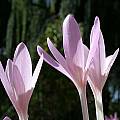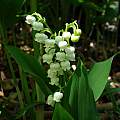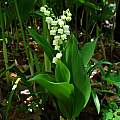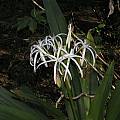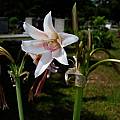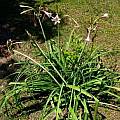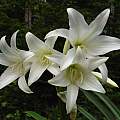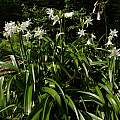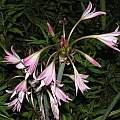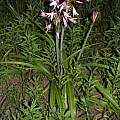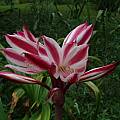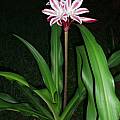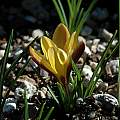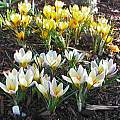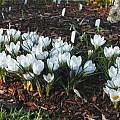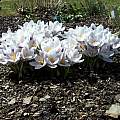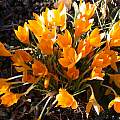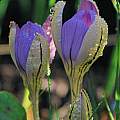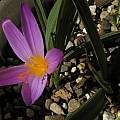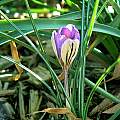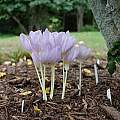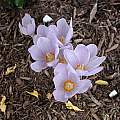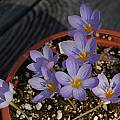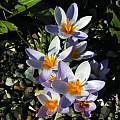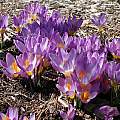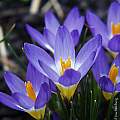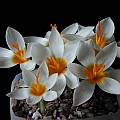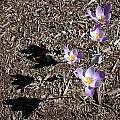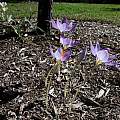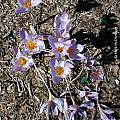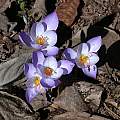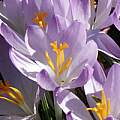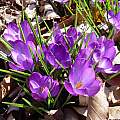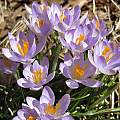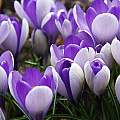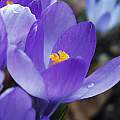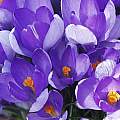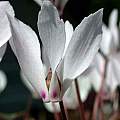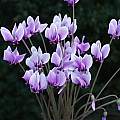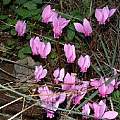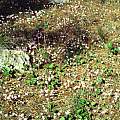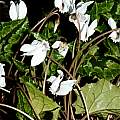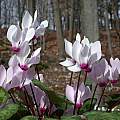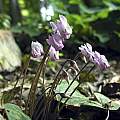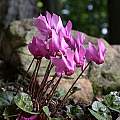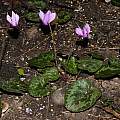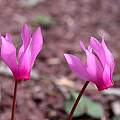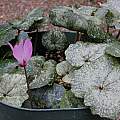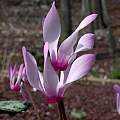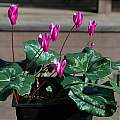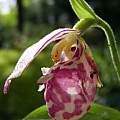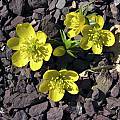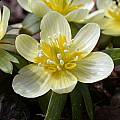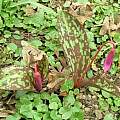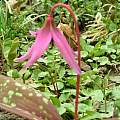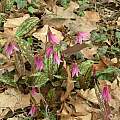On the legacy bulb wiki pages Kathleen Sayce reviews bulbs that outlast their gardeners, with some hints as to why. Suggestions came from PBS list members, review of world weed lists, USDA PLANTS National Database, Flora of North America, and some university databases. For more information consult Legacy Bulbs Index and Introduction.
Information about relevant Colchicum through Erythronium can be found on this wiki page. Information about other species is found on the pages linked below:
Albuca through Amaryllis - Anemone through Chionodoxa - Ficaria through Hyacinthus - Ipheion through Iris - Ixia through Lycoris - Merendera through Nerine - Ornithogalum through Sternbergia - Trillium through Zephyranthes
Colchicum is a genus of highly toxic bulbs, which enhances their ability to naturalize and thrive. Colchicums tolerate a range of soils and moisture regimes.
Colchicum autumnale, meadow saffron, flowers in late summer to fall. Naturalized populations are known from Oregon, Utah, Kentucky to North Carolina and north to New Hampshire; WHZ 4-9.
Convallaria majalis, lily-of-the-valley, is a traditional garden plant, and in some climates can become an invasive pest. It is native to the cool temperate North Hemisphere, in Europe and Asia. Grown for its scented flowers and ground-covering ability, it can become a weed. All parts of the plant are poisonous.
Crinum is a genus of large bulbs, toxic, tropical to subtropical, some surprisingly hardy. Some species are native to southern states, for example, Crinum americanum is native from Texas to North Carolina. More widely cultivated species are typically South African or Asian in origin. There are a number of hybrids and cultivars, some of which are hardier than the parent species.
Crinum asiaticum, poison bulb, grand crinum lily, is cultivated in Hawaii, where plants persist for many decades. It is widely planted in California, the Gulf Coast and Florida, and has naturalized in Louisiana and Florida. It is native to tropical southeast Asia; WHZ 9-11.
Crinum bulbispermum, hardy swamp lily, has naturalized from North Carolina to Texas. It is native to South Africa; WHZ 5-11.
Crinum × powellii is hardy to zone 7, sometimes colder, if protected from prolonged winter cold. It may persist with lack of care for years to decades, forming large clumps; WHZ 5-11 with moisture management and mulching in winter.
Crinum zeylanicum, Ceylon swamplily, has naturalized in Louisiana, Florida and Puerto Rico. It is native to Sri Lanka. Like C. asiaticum, it is widely grown in the Gulf States; WHZ 9-11.
Crocus has been cultivated for thousands of years. There are species native to a large area of Eurasia, from central and southern Europe to North Africa and western China.
Crocus angustifolius, cloth of gold, has naturalized in New York, Massachusetts and Connecticut, WHZ 3-9.
Crocus chrysanthus may naturalize easily in many gardens; WHZ 4-11.
Crocus flavus, yellow crocus, has naturalized in Utah.
Crocus imperati, early crocus, has naturalized in New York; WHZ 3-9.
Crocus kotschyanus , syn. Crocus zonatus, can be somewhat invasive and weedy; WHZ 3-9.
Crocus pulchellus, hairy crocus, naturalizes easily; WHZ 5-9.
Crocus sieberi, Sieber’s crocus, has naturalized in New York; WHZ 3-9.
Crocus speciosus, large purple crocus, WHZ 3-10.
Crocus tommasinianus, Tommasini’s crocus, woodland crocus, may self sow easily. Several PBS members mentioned how easily this species spreads in their gardens. Others bemoaned the lack of seed set or spread; WHZ 3-8.
Crocus vernus, spring or Dutch crocus, has naturalized in Oregon, Utah, Ontario, Massachusetts and Connecticut; WHZ 3-9.
Cyclamen are summer dormant plants with tubers. Cyclamen species are native to the Mediterranean and North Africa.
Cyclamen cilicium was mentioned by a PBS member in southeast France as naturalizing easily.
Cyclamen hederifolium may persist for decades in abandoned gardens with well-drained soils and dappled shade. Native to the eastern Mediterranean, WHZ 5-9; it easily establishes on the West Coast of North America. There was one naturalized population record from Oregon’s Willamette Valley in the PLANTS database.
Cyclamen persicum, less hardy, may persist in warmer climates, WHZ 10-11, such as in southern California.
Cyclamen purpurascens is a central and eastern European species; WHZ 5-9, and persists in a wide range of gardens.
Cyclamen repandum has naturalized in Rodger Whitlock's British Columbia garden.
Cypripedium is a genus with species known as slipper orchids that are native to the Northern Hemisphere, largely in cooler climates. As with other native plants, the right species in the right climate may naturalize and persist for many years in gardens. Species in this genus may need symbiotic mycorrhizal fungi associated with their habitat to thrive so naturalized populations are most likely in habitats where they originated.
Cypripedium guttatum was observed growing in masses, invading the lawn, in a garden near Anchorage, Alaska, by Jane McGary.
Eranthis hyemalis, winter aconite, is in the Ranunculaceae family, and like many members of the family is poisonous. Native to Asia Minor and Europe woodlands, it flowers in winter, usually ahead of snowdrops. Hardy in WHZ 4-7, and probably colder zones if well mulched, it may naturalize in part shade under trees and shrubs. It can be invasive where happy, and can be controlled by digging up when still green. It has naturalized in Ontario, Canada, and the United States south and east of the Great Lakes, east to North Carolina and New York.
Erythronium speciated in North America, particularly in Western North America, with a few species in Eurasia. This genus naturalizes easily if basic needs are met, though the species vary from region to region.
Erythronium dens-canis was reported as naturalized in a location in northern Virginia near the Potomac River by Jim McKenney.
Species listed on other legacy bulb pages can be found alphabetically by clicking on the links below or by going to the index and introduction page where they will be listed in a table.
Albuca through Amaryllis - Anemone through Chionodoxa - Ficaria through Hyacinthus - Ipheion through Iris - Ixia through Lycoris - Merendera through Nerine - Ornithogalum through Sternbergia - Trillium through Zephyranthes - Legacy Bulbs Index and Introduction
